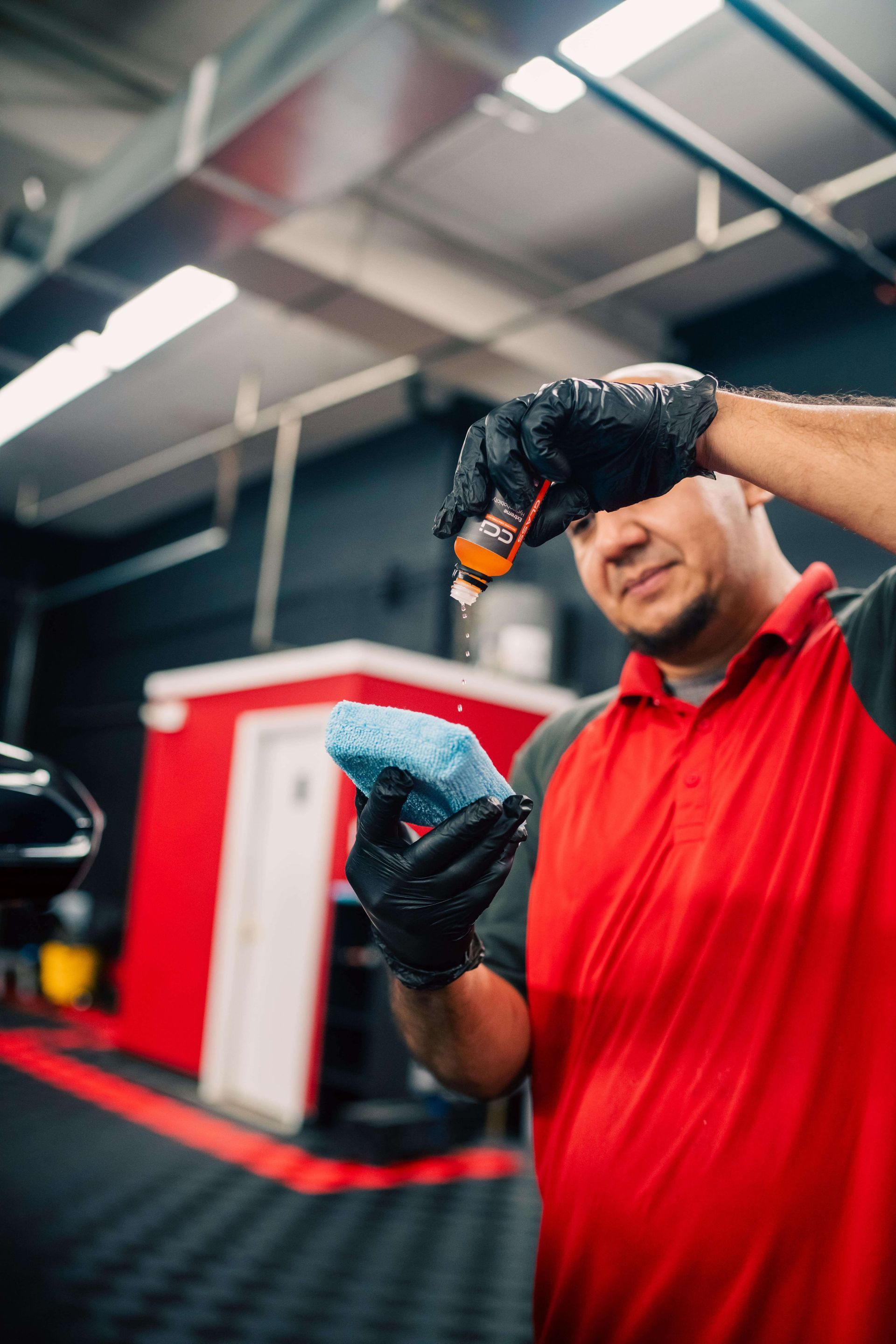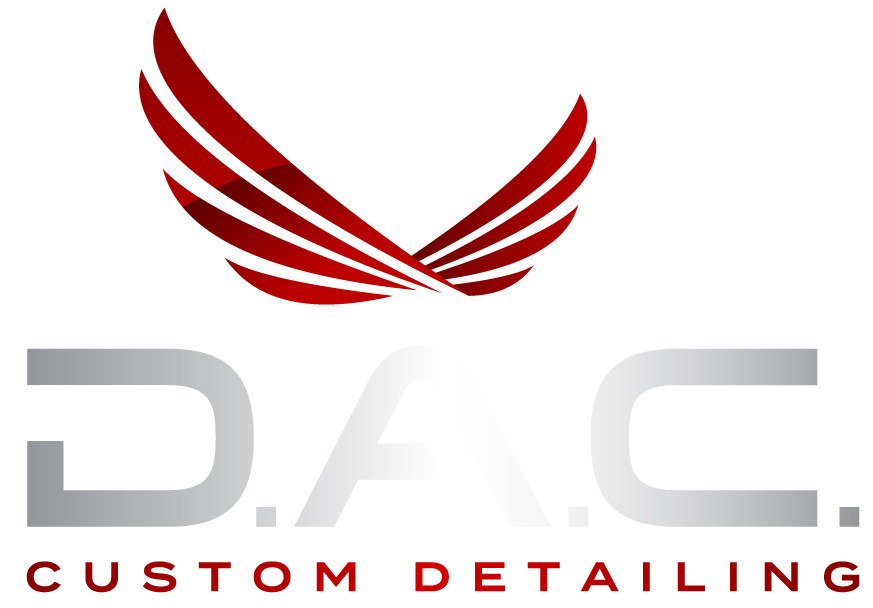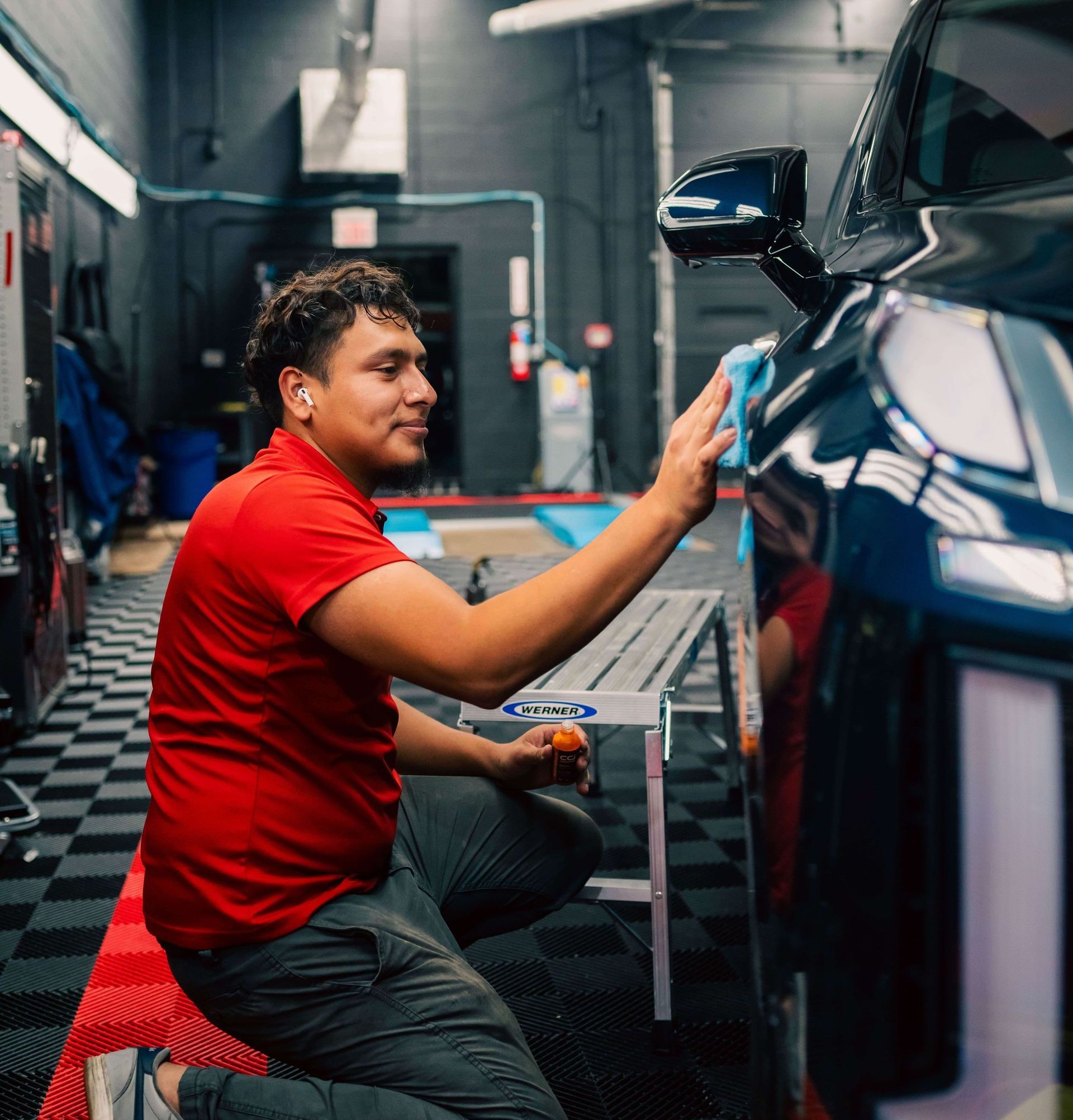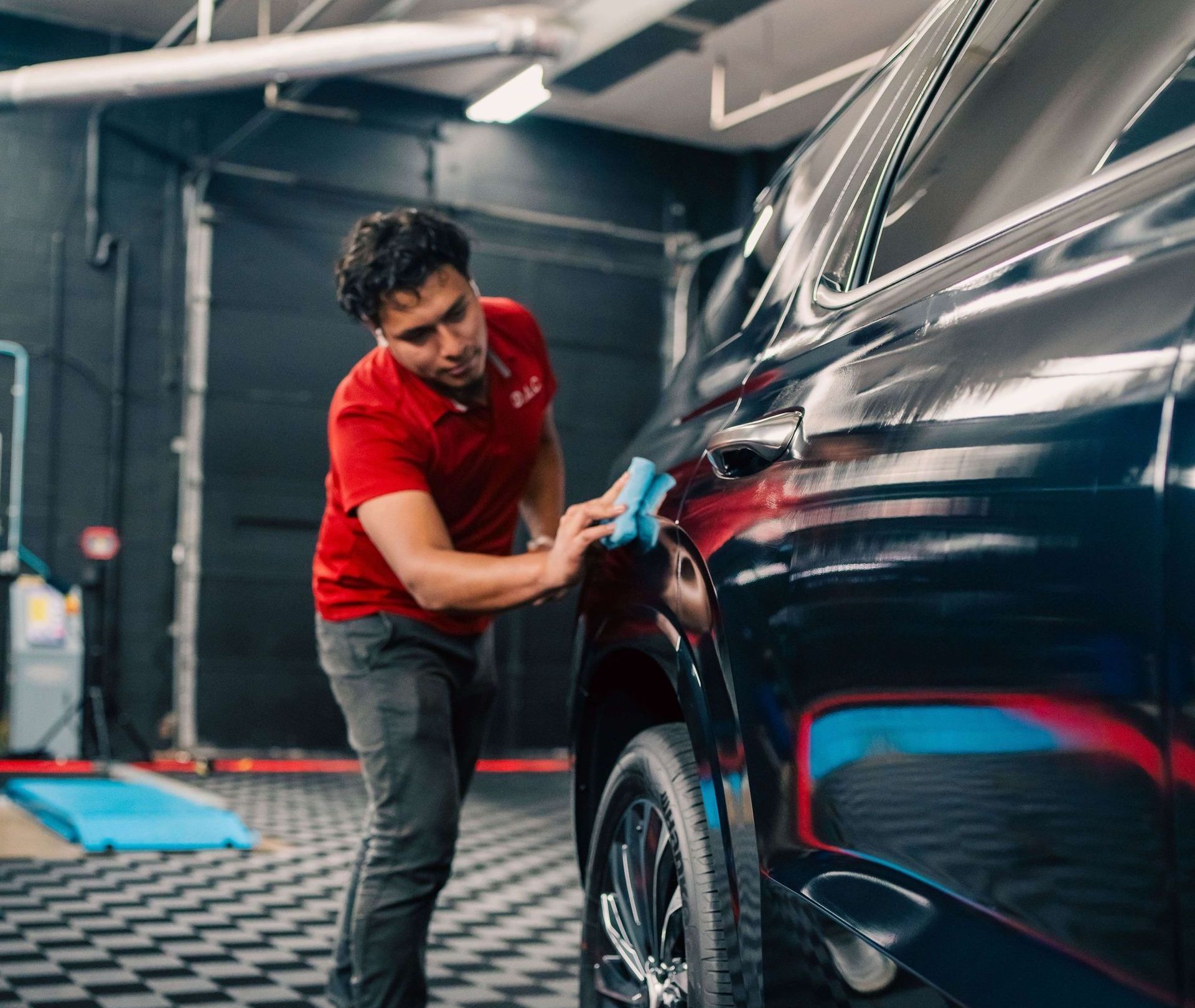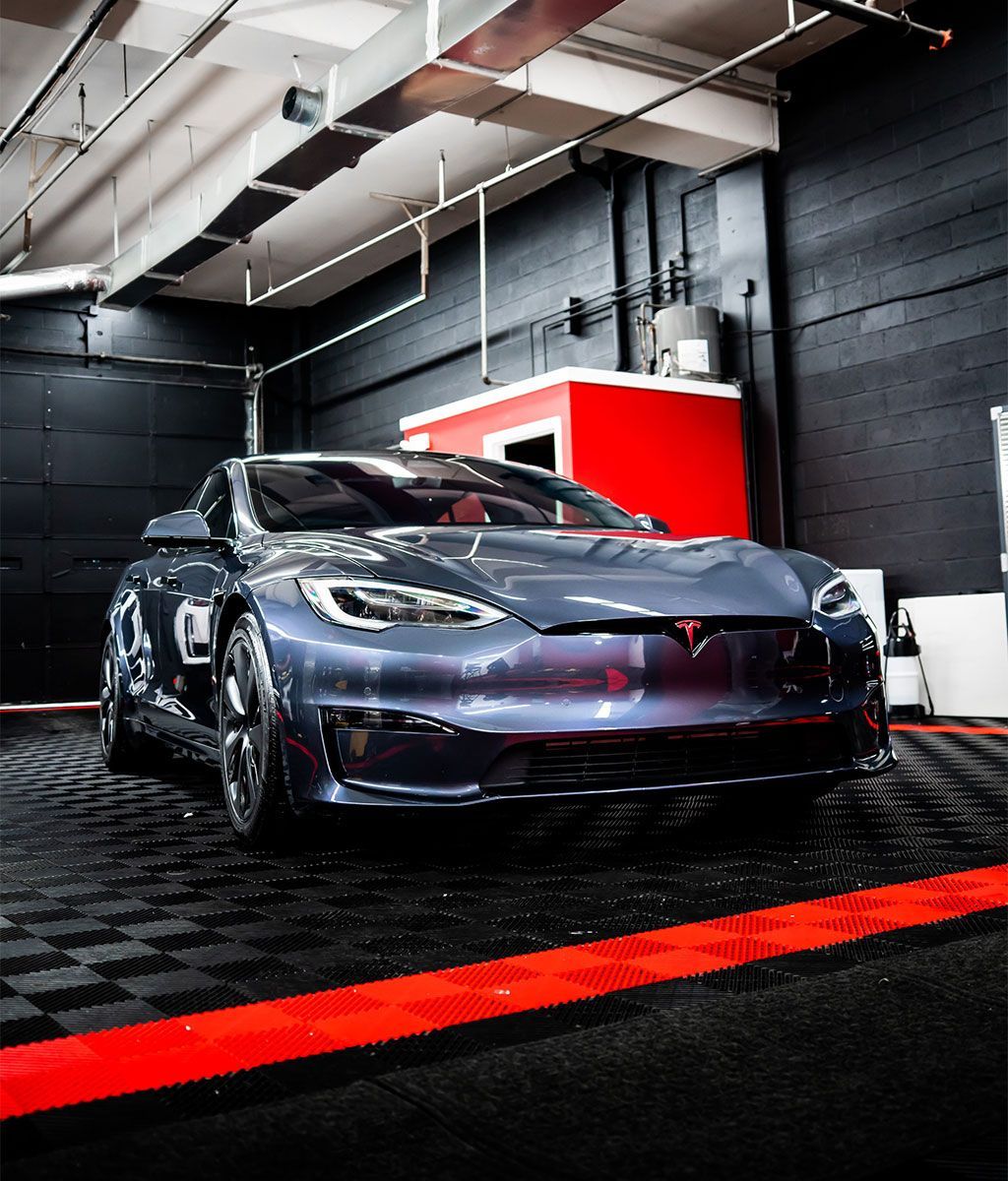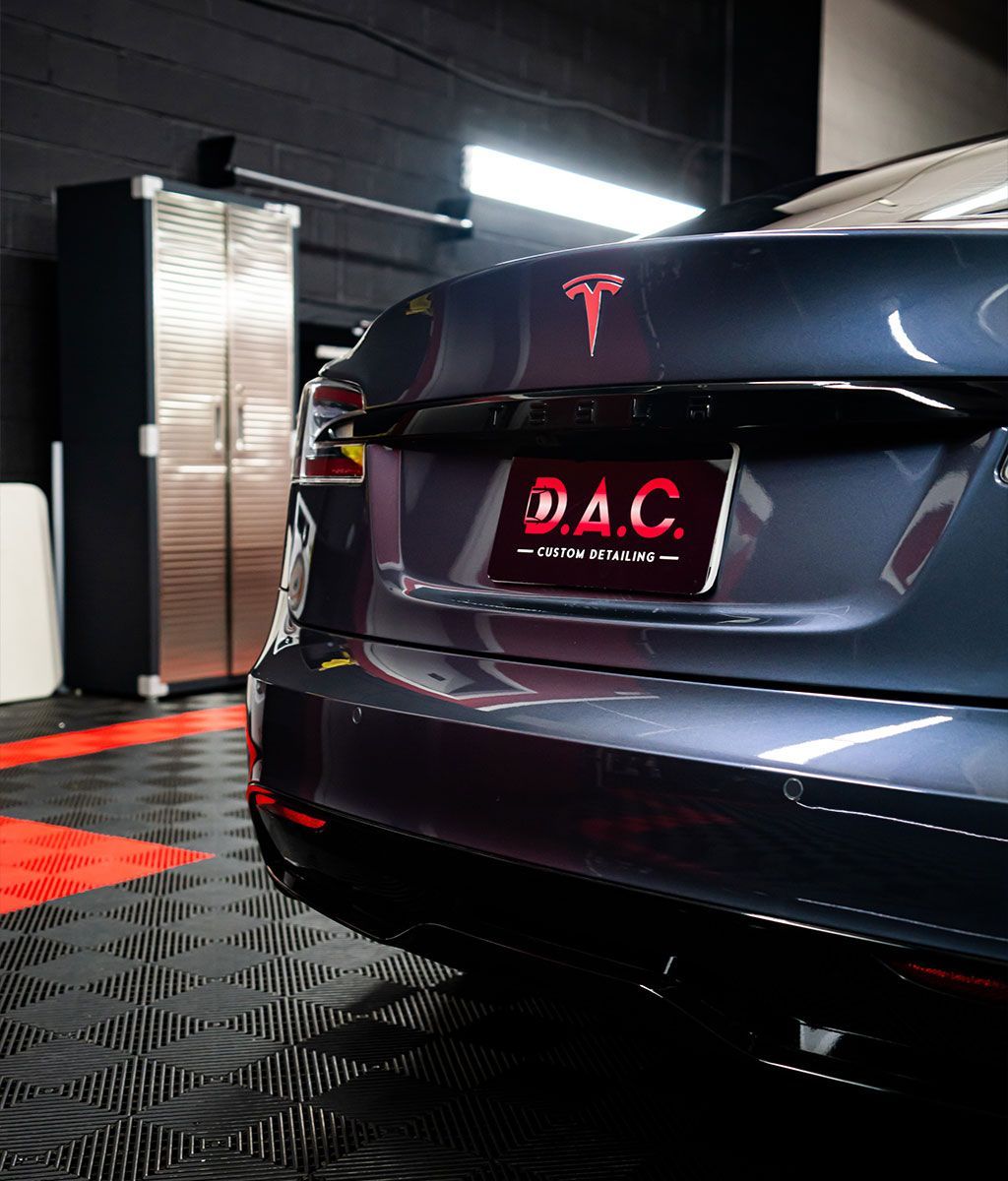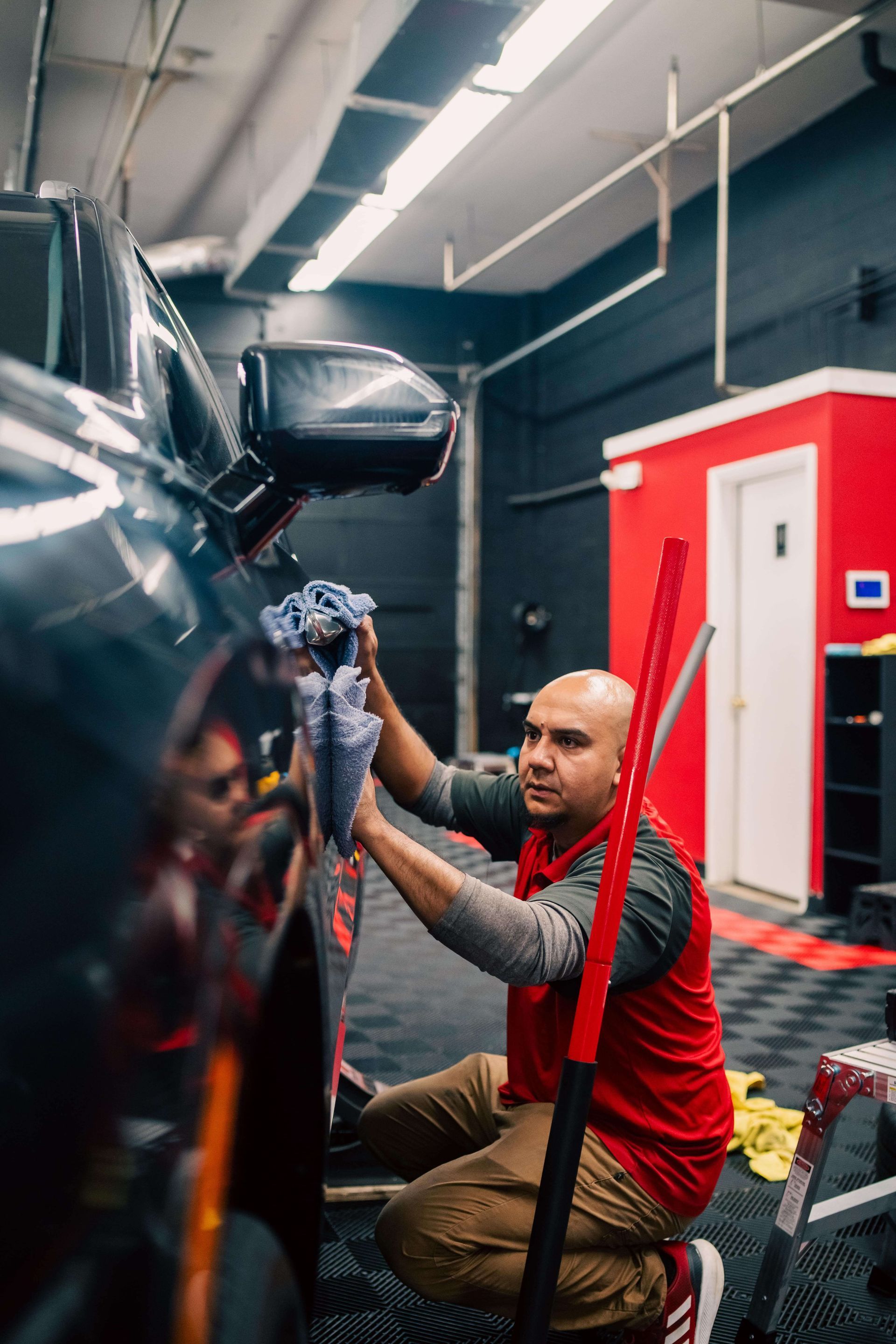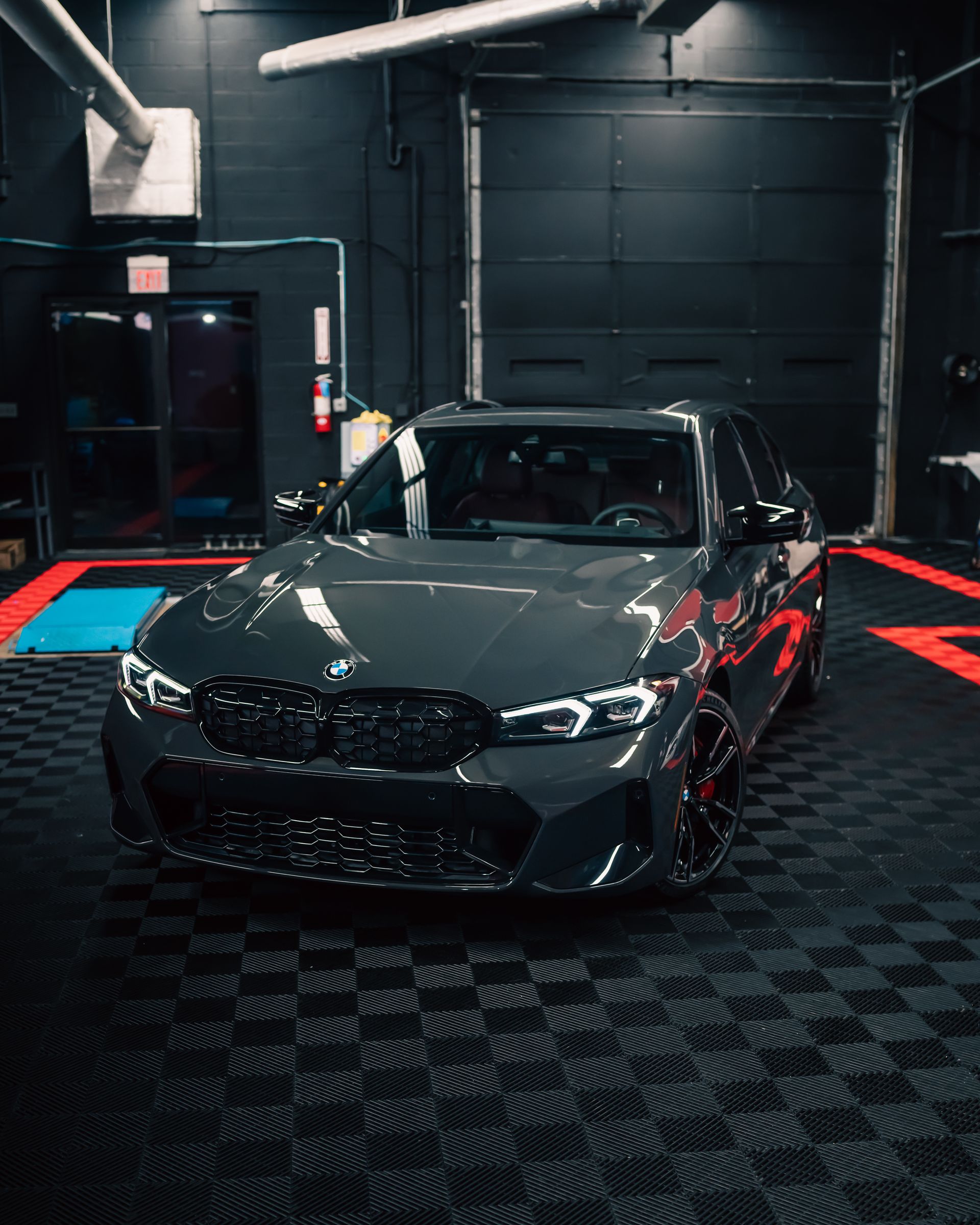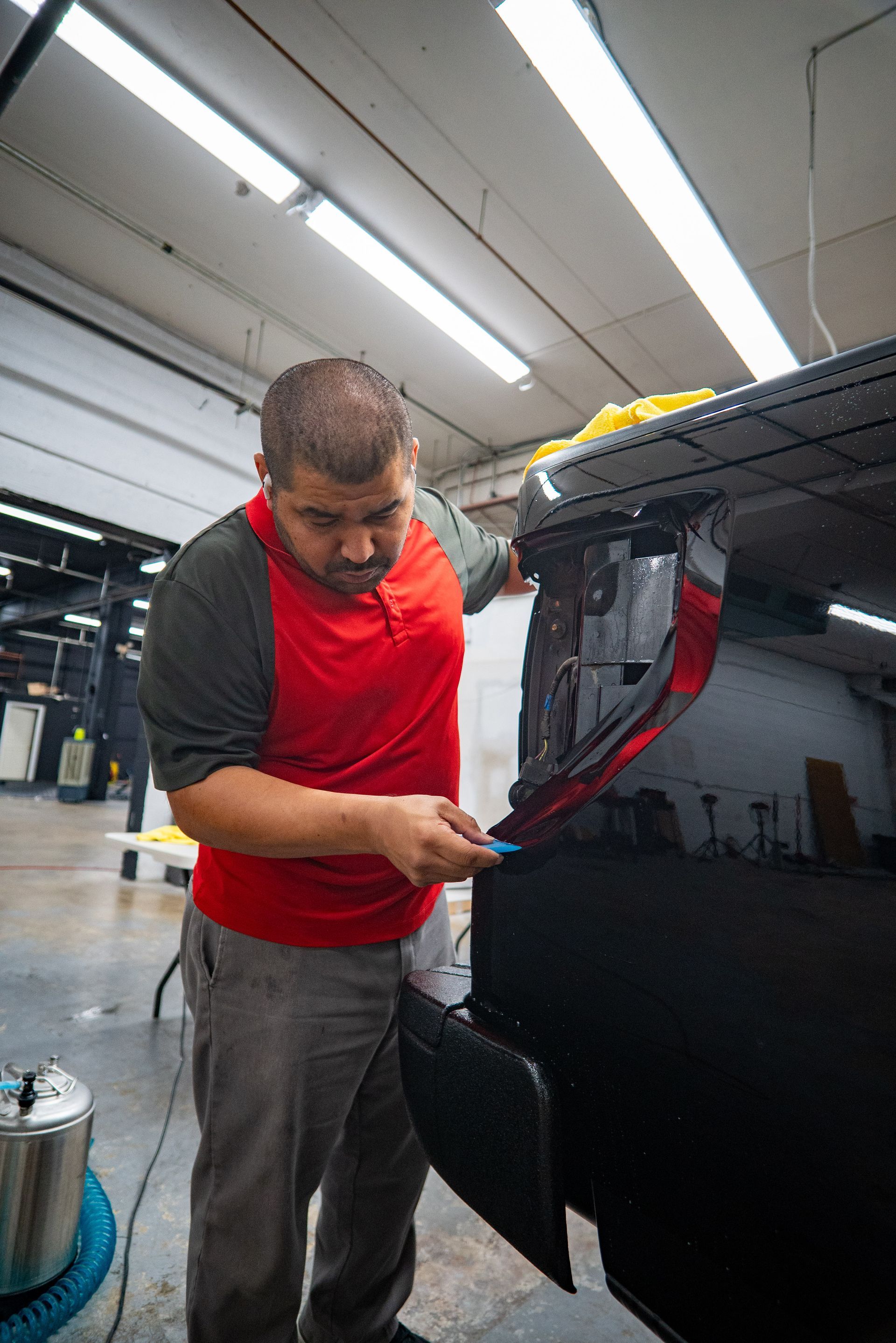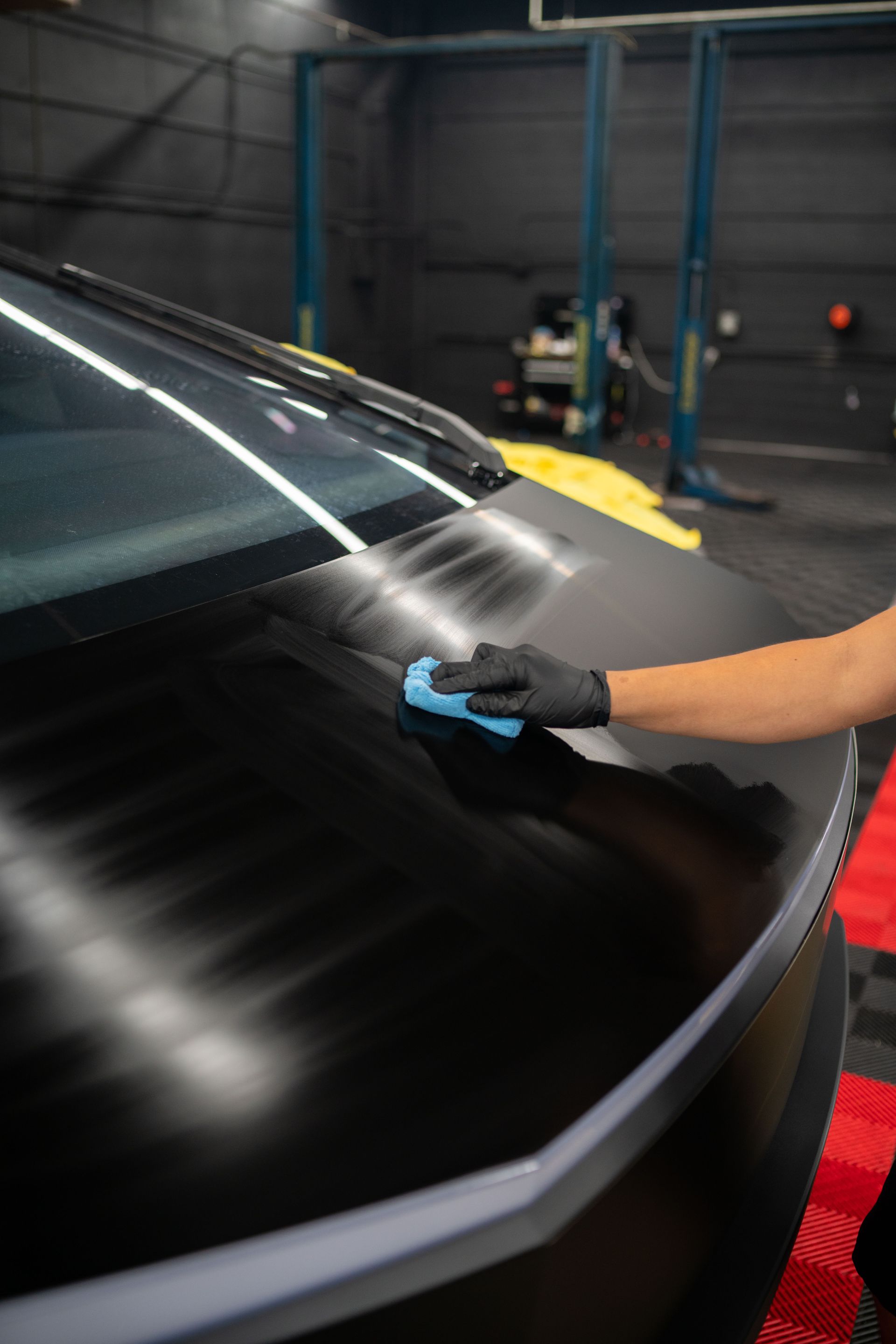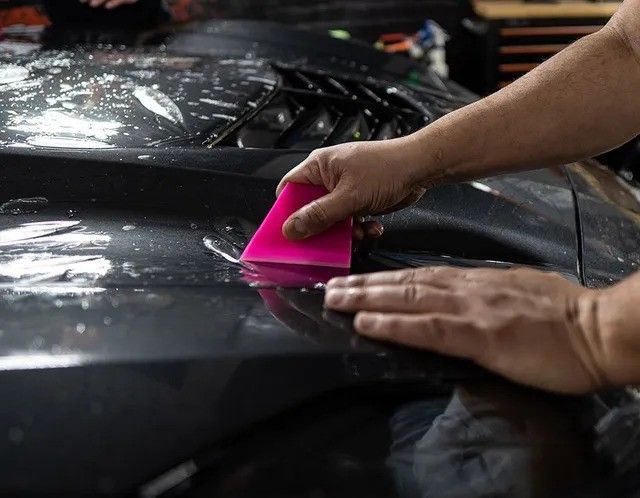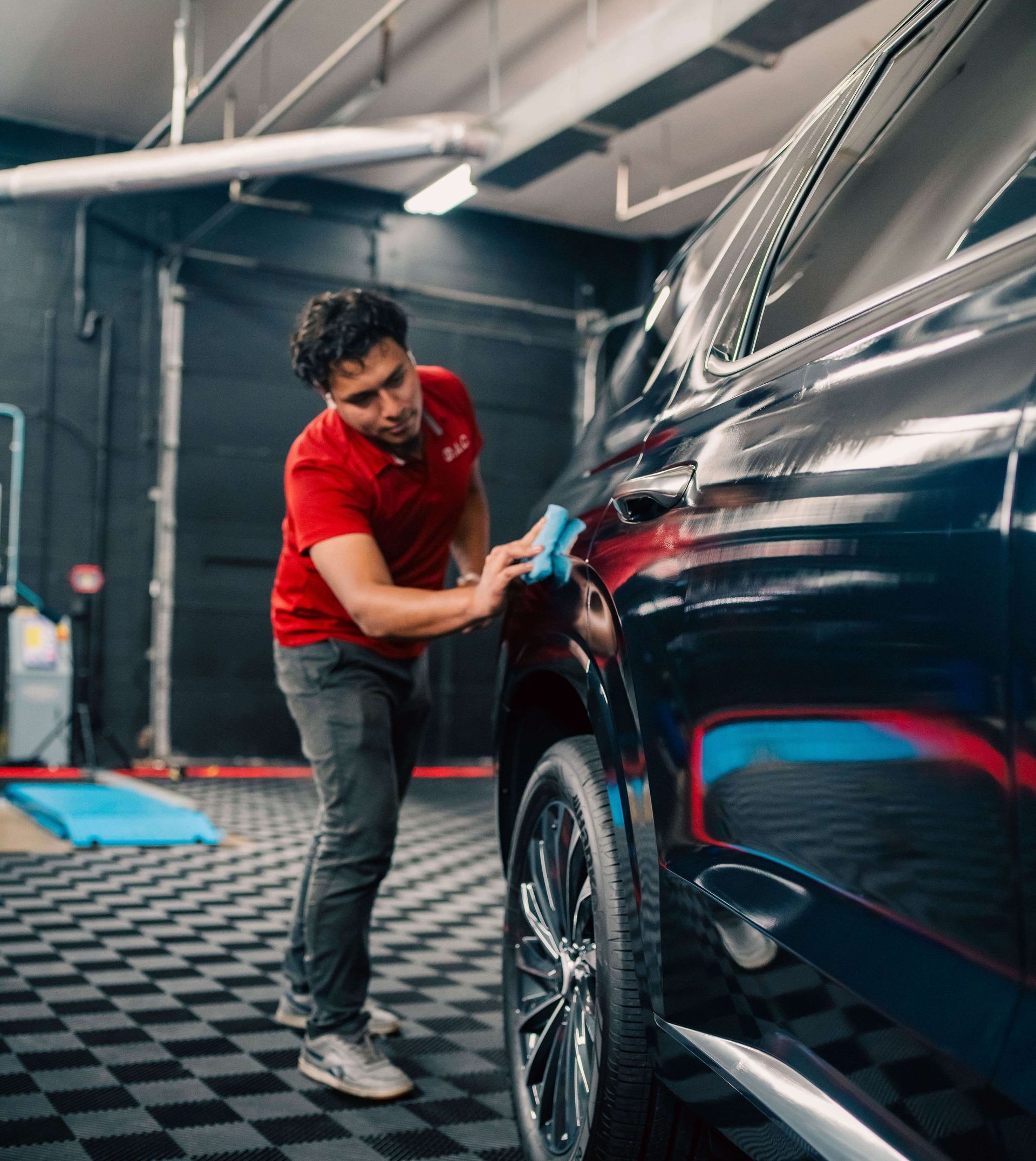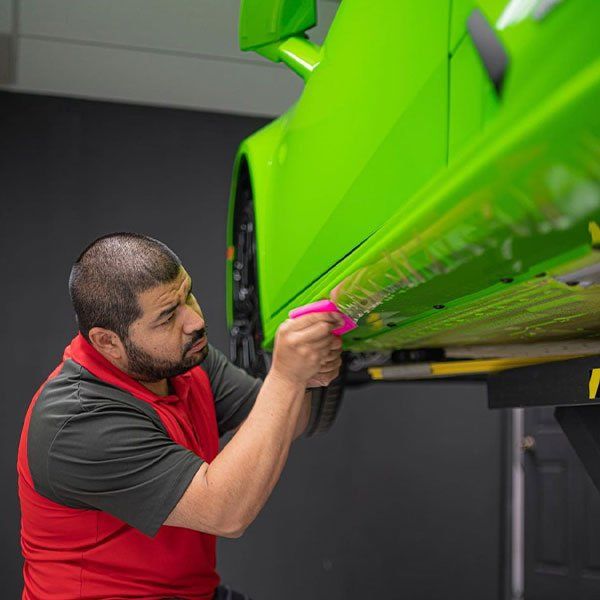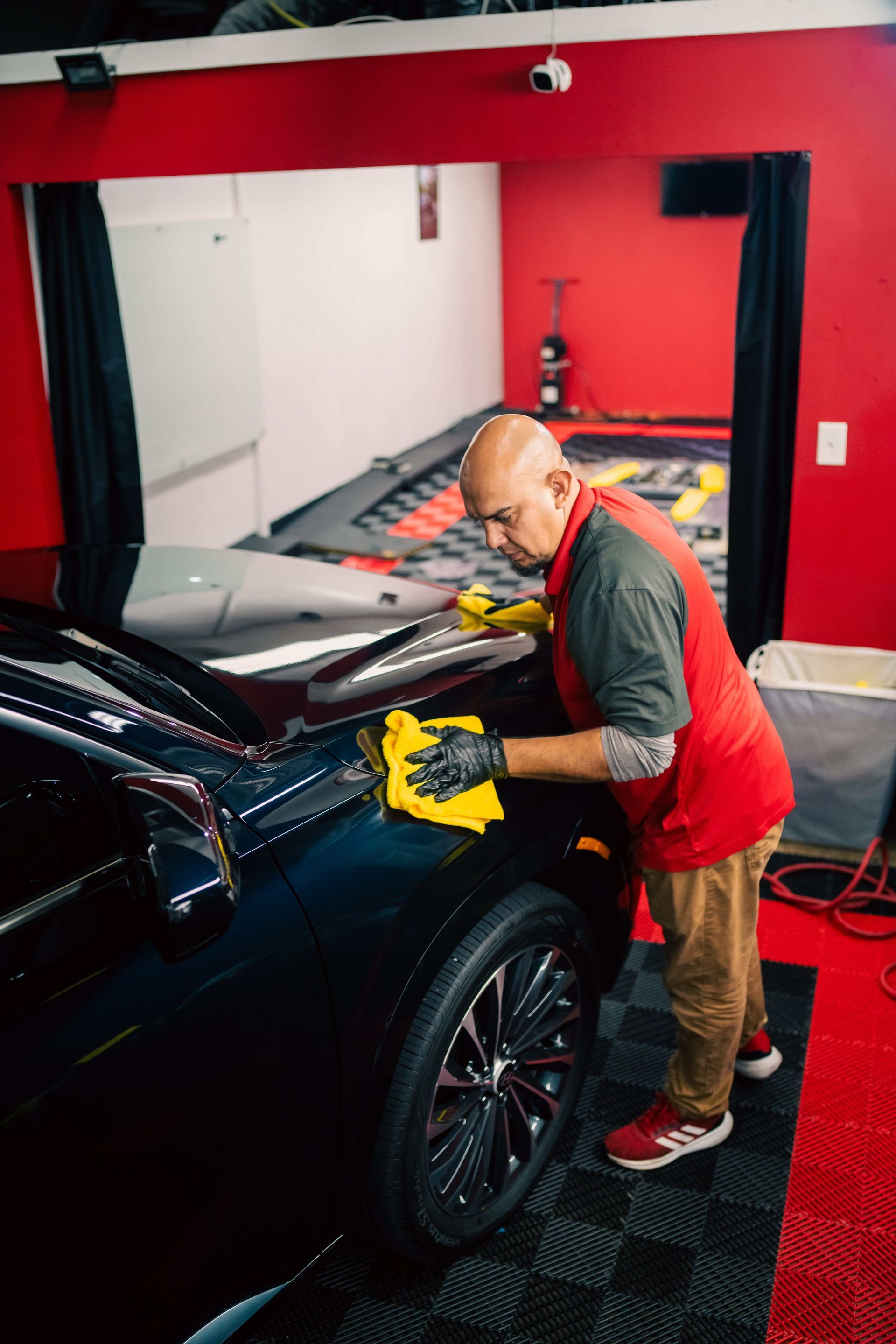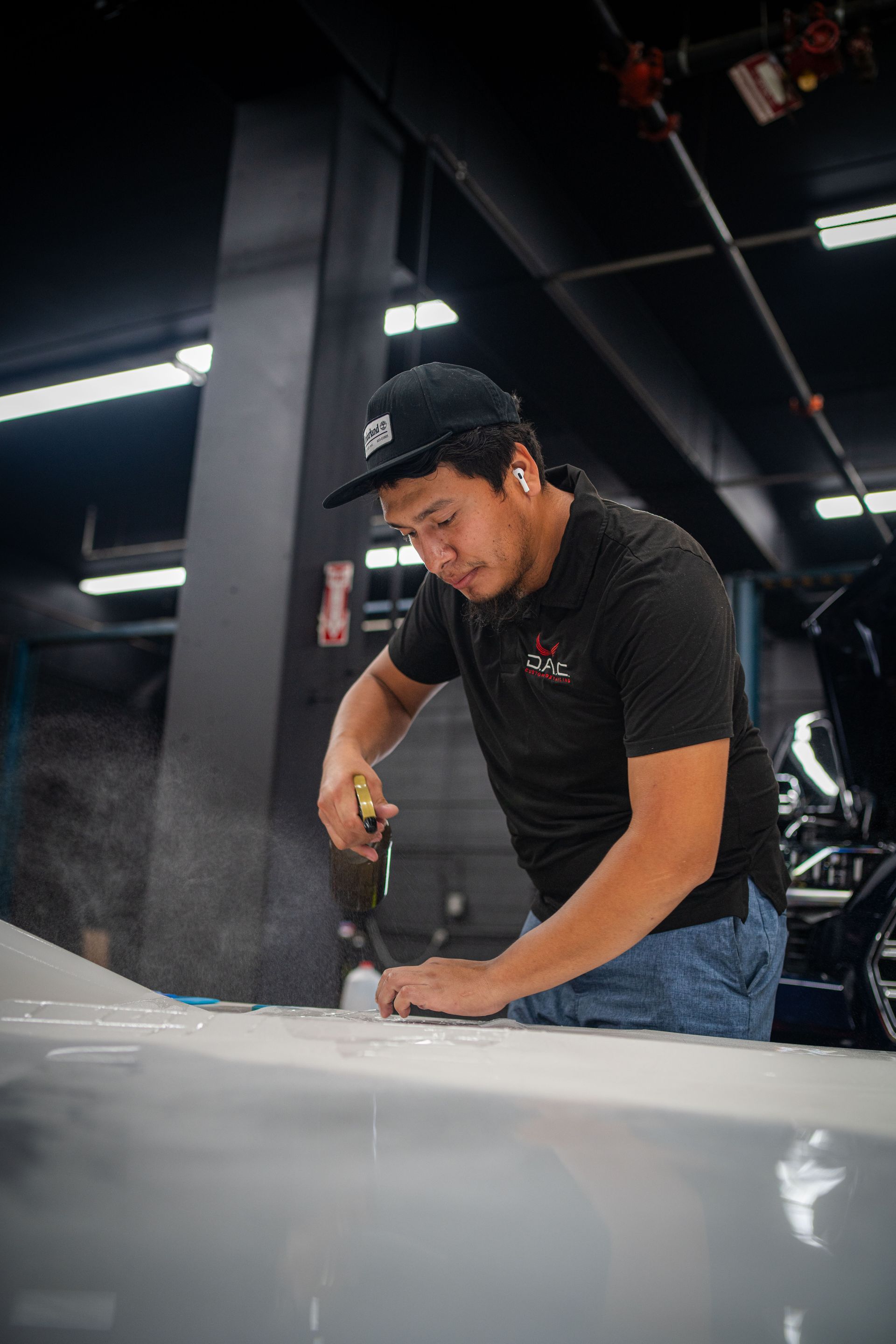REVIVE, PROTECT, MAINTAIN
Your vehicle is more than transportation—it’s a reflection of your investment and style. Over time, exposure to sunlight can cause fading and dullness, diminishing both appearance and value. UV coatings offer a solution by forming a protective barrier against harmful rays, helping to maintain your car’s finish and preserve its long-term condition.
Ceramic coatings create a protective layer that blocks harmful UV rays, which helps prevent oxidation and fading of your vehicle's paint. While their effectiveness can vary, high-quality coatings significantly enhance the durability of the paint by reducing direct sunlight exposure, thereby maintaining color vibrancy over time.
The Role of Coatings in UV Protection
Ceramic coatings are not merely an aesthetic enhancement; they play a vital role in preserving your car's paint by acting as a shield against the sun's harmful ultraviolet rays. Just like applying sunscreen protects our skin, these coatings form a protective layer over the paint, acting as a barrier to limit exposure to UV radiation. They contain specialized compounds that absorb UV rays, converting them into harmless heat, which is then dissipated. This process helps mitigate direct damage from the sun and prevents premature fading. However, it's essential to note that not all ceramic coatings offer the same level of protection. The effectiveness primarily depends on the formulation of the coating itself. Many products boast impressive results, but as professionals often caution, the thickness of the coating—typically only 1-2 microns—can limit its UV-blocking capabilities. Therefore, investing in a higher-quality product that uses advanced technology is key to achieving the best outcomes for your vehicle’s paint.
UV-blocking coatings play a vital role in preserving your vehicle’s paint by reducing the effects of sun exposure, such as fading and oxidation. This protection helps maintain both the appearance and lifespan of your car’s finish. When paired with regular care—like washing with pH-neutral soaps and avoiding abrasive automatic car washes—these coatings can keep your vehicle looking newer for longer. Applying a ceramic booster every 6–12 months further enhances the coating’s durability. While ceramic coatings don’t completely block UV rays, they significantly minimize their impact, supporting a lasting, well-maintained exterior.
How UV Rays Affect Car Paint
UV rays directly impact the molecular structure of car paint, breaking down its chemical bonds over time. When the sun's penetrating rays shine on your vehicle, they initiate a process known as oxidation. This reaction transforms the vibrant, glossy finish of new paint into a dull, lifeless surface. You might very well have seen older cars displaying dulled or chalky paint, which is precisely the outcome of prolonged UV exposure—indeed, a visual cue indicating that UV radiation has taken its toll.
- Oxidation and Fading: As car paint oxidizes due to UV radiation, it undergoes a chemical transformation that results in increased brittleness while reducing reflectivity. This process not only causes the paint to lose its glossy appeal but also increases its susceptibility to wear and tear. Paints without adequate UV protection can fade noticeably within a mere six months of constant sun exposure, potentially cutting their lifespan by up to 50% over just five years. All these factors contribute to the inevitable deterioration of your vehicle's appearance. But the impact of UV rays isn't limited to surface issues; there are deeper implications at play.
- Damage Beyond the Surface: In addition to the fading and dullness on the exterior, UV rays can penetrate into deeper layers beneath the paint, wreaking havoc over time. This hidden damage often leads to a higher likelihood of rust formation. As the protective coating wears away and moisture seeps through compromised layers, it compromises the structural integrity of your vehicle, turning what may seem like a cosmetic issue into something far graver. Preventative measures are crucial; taking action against these damaging rays will save you considerable money on bodywork and repairs down the line.
To combat these harmful effects effectively, consider applying high-quality ceramic coatings or other protective layers that incorporate UV blockers and enhance durability. Regular washing with pH-neutral shampoos will help maintain your car's protective coatings without stripping essential elements away.
Types of UV-Resistant Coatings
In the world of automotive care, several types of UV-resistant coatings stand ready to defend your vehicle against the sun's potentially damaging rays. Each type offers unique properties and benefits that can elevate your car's appearance while protecting its paint. To get a clearer insight, let's explore three major categories: ceramic coatings, polyurethane coatings, and hybrid coatings.
- Ceramic Coatings: Ceramic coatings are no ordinary protective layer; they are liquid polymers that bond at a molecular level with your car's paint. This advanced technology creates an incredibly durable barrier that combats UV rays while also repelling dirt and other contaminants. Imagine it as a shield that keeps your paint looking fresh while providing superior protection compared to traditional wax. Interestingly, high-quality ceramic coatings can last anywhere from 2 to 5 years, depending on factors such as the application method and maintenance practices.
- Polyurethane Coatings: Polyurethane coatings may not have the supernatural elegance of ceramics, but they make up for it with practicality. These coatings form a flexible yet sturdy shield over your vehicle's surface. The beauty of polyurethane lies in its elasticity; it can absorb impacts effectively, making it ideal for cars that frequently endure harsh conditions and road debris. Notably, many auto-detailing professionals advocate for polyurethane coatings—especially for off-road vehicles—because these durable surfaces handle rugged environments beautifully while keeping UV damage at bay.
- Hybrid Coatings: Hybrid coatings represent an innovative blend of ceramic and polymer technologies. They capitalize on the strengths of both products, combining ceramic’s robust hardness with polyurethane’s flexibility. This results in enhanced UV protection—perfect for outdoor enthusiasts who want strong defense without compromising ease of application. Furthermore, the cost-effectiveness of hybrid solutions, when compared to their pure ceramic counterparts, makes them an appealing choice for many vehicle owners seeking reliable performance at an affordable price.
Exploring these various coating types sheds light on how they offer unique advantages in protecting your vehicle from harmful UV rays.
Benefits of Applying UV Coatings
Applying a UV coating goes beyond just protecting your vehicle’s paint from fading; it enhances the car's overall appearance while providing long-term protection. One of the standout advantages is their hydrophobic properties, which means they repel water and dirt, making it significantly easier to keep your car clean. Imagine not having to scrub your vehicle as often, simply because mud and grime slide right off due to the slick surface created by the UV coating. These coatings keep your car looking pristine and help maintain its value over time. Preserving the original paint quality leads to higher resale values since potential buyers greatly appreciate a well-maintained exterior.
Another appealing aspect of UV coatings is their durability compared to traditional methods like wax or sealants. Wax typically lasts only a few weeks and requires frequent reapplication, which can be tedious for car owners. In contrast, high-quality UV coatings can endure for years, even under harsh weather conditions. This extended longevity translates to long-term cost savings by reducing the need for frequent repainting or surface repairs. Factoring in regional climate conditions—such as intense sunlight or acid rain—these coatings offer essential protection. In areas with high UV exposure or frequent rain, choosing a nano ceramic coating or paint protection film (PPF) becomes a smart and practical investment.
Alongside all these practical advantages, let’s not overlook the aesthetic appeal that comes with applying a UV coating. The glossy finish provided by ceramic coatings truly enhances the beauty of the vehicle's color and depth. You might even notice your car gleaming in ways it hasn't since you first drove it off the lot. First impressions matter, especially when it comes to vehicles; an eye-catching shine speaks volumes about how well you care for your car. Given the myriad benefits—from protection against environmental hazards to enhanced aesthetics—investing in UV coatings is an essential step in maintaining your vehicle's beauty and functionality for years to come. As advancements continue to evolve and become more affordable, we’ll see more drivers embracing this crucial aspect of car ownership in 2025 and beyond.
Application Techniques for Optimal Protection
Proper application techniques dramatically impact the effectiveness of UV coatings. Each step in the process functions like a cog in a well-oiled machine, and if even one is overlooked, the whole effort may be compromised. Let’s walk through these steps together to ensure your coating achieves maximum protection and longevity for your surfaces.
Step-by-Step Guide to Application
- Surface Preparation: The first phase of application is all about surface preparation. This can't be overstated: a clean canvas is essential for any art, including coating. Start by cleaning your car’s surface thoroughly. This means wiping away dirt, grime, and any old wax that might be lurking from previous treatments. Experts often recommend using a clay bar in this step; imagine it as a magic wand that pulls embedded contaminants away, leaving your surface clean enough to shine. A thorough cleaning ensures that nothing interferes with the adhesion of the UV coating.
- Polishing and Paint Correction: Any imperfections left on the paint will be magnified once you apply the UV coating. Think of this phase as smoothing out a rough landscape before applying a fresh layer of paint. It’s about ensuring the surface is not only clean but also flawlessly smooth. Those few extra minutes spent at this step can save you from serious heartache later when you see flaws reflected in your shiny new coating.
- Surface Priming: Depending on the recommendations of your specific coating manufacturer, applying a primer can enhance adhesion significantly. Primers act as an intermediary layer that increases the bond between the coating and the paint surface itself—especially on specialized surfaces where traditional coatings might struggle to adhere correctly. However, for most DIY enthusiasts using conventional consumer-grade coatings, skipping this step is often acceptable and may save time while still achieving satisfactory results.
- Coating Application: In this coating application stage, precision is key. Using an applicator pad, you'll apply the UV coating evenly across the surface, working in small sections rather than trying to cover everything at once. Think about it like icing a cake; if you try to smother too much at once, you'll end up with drips instead of smooth coverage. It's advisable to closely adhere to the manufacturer's guidelines, as they have extensive experience with their product and have already overcome the initial challenges! To gain some extra fortitude from your application, consider using two light coats instead of one heavy one; such an approach helps produce a better finish while maximizing durability.
- Curing and Sealing: After applying the UV coating comes a critical period known as curing and sealing. Allowing the coating to cure properly ensures that it adheres fully—this can take anywhere from several hours to days, depending on its formulation. During this time, avoid exposing the surface to water or other elements that can diminish its bonding process. Think of this phase as simulating that indecisive friend who takes their time deciding on dinner—it requires patience but ultimately yields delicious results.
With diligent attention to every step from preparation through curing, you're setting your surfaces up for enduring protection against the elements while keeping them looking pristine.
Tips for Maintaining UV Protective Coatings
The first step in maintaining your UV protective coating is to establish a consistent washing routine. Just as regular hygiene is essential for personal care, your vehicle requires the same attention to preserve its clean and polished appearance. Utilizing pH-neutral shampoos offers dual benefits: they effectively remove contaminants while protecting the integrity of the coating and maintaining a glossy finish. It is equally important to avoid abrasive cleaning tools, as they can damage the surface. Soft microfiber cloths are highly recommended for safely lifting dirt without causing damage. Additionally, not all washing methods are equally beneficial. While automatic car washes may offer convenience, they often rely on harsh chemicals and abrasive brushes that can compromise the protective coating. These systems can spread debris across the surface, increasing the risk of premature wear. A controlled hand wash remains the preferred method, allowing for the careful selection of products and techniques. That said, washing too frequently should be avoided, as excessive cleaning may contribute to unnecessary wear on the protective layer.
Beyond regular washing, it's vital to consider reapplication as an integral part of maintenance. Similar to diligently reapplying sunscreen for protection against harmful UV rays, your vehicle also benefits from reapplying its protective coating. Over time—estimated at every 12 to 24 months—coatings naturally wear off due to exposure to environmental elements like rain, sun, and dirt. Scheduling a reapplication ensures that your vehicle continues to enjoy optimal protection while maintaining its vibrant appearance. Regular upkeep keeps your car looking impeccable and helps preserve its resale value. By adhering to these simple yet effective practices—regular washing with pH-neutral products, avoiding automatic car washes, and timely reapplication—you can significantly extend the life of your UV protective coatings. When you invest time in caring for your vehicle’s appearance now, you're saving your future self from costly repairs down the road. In maintaining these coatings consistently, you're not just protecting your investment; you're ensuring that your vehicle remains a source of pride for years to come!
Top-Notch Ceramic Coating Services in Washington, D.C.
Protect your vehicle with the unmatched durability and shine of
professional ceramic coating from D.A.C. Custom Detailing—Washington, D.C.’s trusted name in high-quality automotive care. Our expert technicians apply advanced ceramic technology that bonds to your car’s surface, shielding it from UV rays, road grime, and environmental damage while delivering a stunning, long-lasting gloss. Whether you drive through the city or park curbside every day, our ceramic coating services guarantee that your car remains protected and polished for an extended period.
Schedule your appointment today and experience the next level of paint protection, backed by precision and care!
Share with friends
